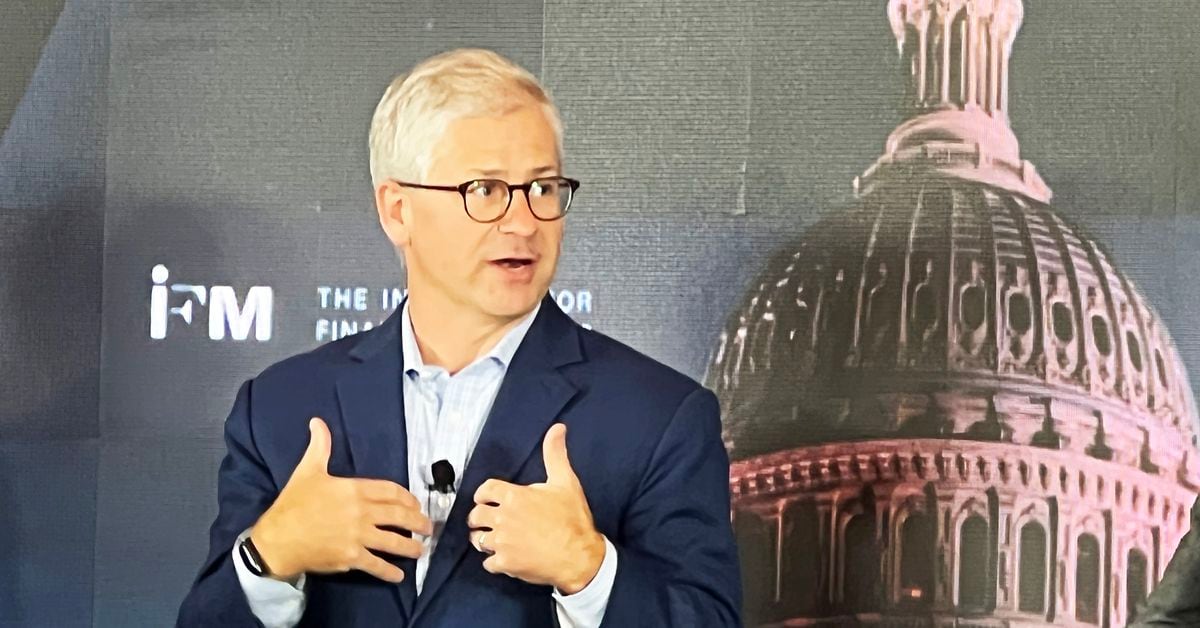The U.S. Risks Its Position as a Stablecoin Leader
This content highlights the need for regulators and policymakers to approach stablecoin regulation differently than traditional payment systems. While stablecoins may not present more or less risk, they do present different risks due to their underlying technology and use in new forms of payment activity. On the positive side, stablecoins’ fully-backed nature can help mitigate systemic risk and make supervision easier for regulators. However, there are also operational risks associated with stablecoins that may not have been previously considered by regulators. Therefore, it is crucial for regulators to assess these unique risks and develop appropriate regulations for stablecoins.
Title: The U.S. Risks Its Position as a Stablecoin Leader: A Tumultuous Road Ahead
Byline: [Your Name]
Date: [Current Date]
(Insert Location) – The United States, once at the forefront of the burgeoning stablecoin industry, is now facing the risk of losing its dominant position in the global market. Regulatory uncertainty and mounting concerns around monetary policy have cast a shadow over the country’s stablecoin landscape, causing experts to question the reliability and stability long associated with the U.S. stablecoin ecosystem.
At the epicenter of this growing storm lies the ever-popular Tether (USDT), the world’s largest stablecoin. Tether, with its one-to-one peg to the U.S. dollar, has traditionally enjoyed immense trust and widespread adoption. However, recent regulatory scrutiny, coupled with mounting allegations of market manipulation, has cast doubts on Tether’s stability and credibility.
The U.S. government’s ambiguous stance on stablecoins has left the industry grappling with uncertainty. The lack of clear regulations has not only impacted market participants but has also allowed foreign competitors to gain a competitive edge. Stablecoin projects from jurisdictions like Switzerland, Singapore, and the United Arab Emirates are gaining momentum as investors seek alternatives in search of regulatory clarity.
This instability and lack of regulatory guidance could have far-reaching consequences for the U.S. economy. Stablecoins serve as essential tools for dollarization in other countries, enabling individuals and businesses to bypass traditional banking systems and facilitate international transactions. By potentially losing its grip on the stablecoin industry, the U.S. may inadvertently risk relinquishing a significant portion of its global economic influence.
Market observers argue that the time for swift and decisive action is now. The U.S. Congress, regulators, and industry players must come together to establish a robust and forward-thinking regulatory framework for stablecoins. Without proper oversight, stablecoins could become a breeding ground for illicit activities, leading to financial instability domestically and abroad.
While the risks associated with stablecoins are apparent, a well-regulated and transparent stablecoin industry could provide significant benefits for the U.S. economy. It could foster financial innovation, creating new avenues for cross-border payments and enabling a more efficient and inclusive financial system. Additionally, a strong and stable stablecoin ecosystem would attract investment, further solidifying the U.S.’s position as a global financial powerhouse.
However, making regulatory headway in this arena will undoubtedly be a challenging task. Balancing consumer protection, national security, and financial stability requires careful consideration from all stakeholders involved. The U.S. is not alone in navigating these waters. Governments worldwide are grappling with similar challenges and are exploring their options cautiously.
For the U.S. to regain its status as a stablecoin leader, collaboration between regulators, lawmakers, and industry participants is crucial. Clear guidelines encompassing aspects such as capital requirements, liquidity management, and compliance measures need to be established. The aim should be to foster innovation while minimizing risks.
Moreover, regulators must take a proactive approach in addressing the governance and transparency of stablecoins. Public audits, regular reporting, and robust internal control mechanisms should be implemented to ensure complete accountability. Project founders and management teams should be required to meet stringent eligibility criteria and undergo thorough due diligence to ensure their capability to safeguard investor interests.
Time is of the essence, and the U.S. must act swiftly to regain its position as a global leader in stablecoins. Failure to do so could have severe implications for the country’s economy and its standing on the world stage. The stability and reliability long associated with the U.S. must be restored if it intends to remain at the forefront of the digital finance revolution.
As stakeholders await regulatory clarity, the future of stablecoins in the U.S. remains uncertain. The clock is ticking, and the nation must decide whether it wants to lead the charge or be left behind in this transformative financial landscape.
I don’t own the rights to this content & no infringement intended, CREDIT: The Original Source: www.coindesk.com

